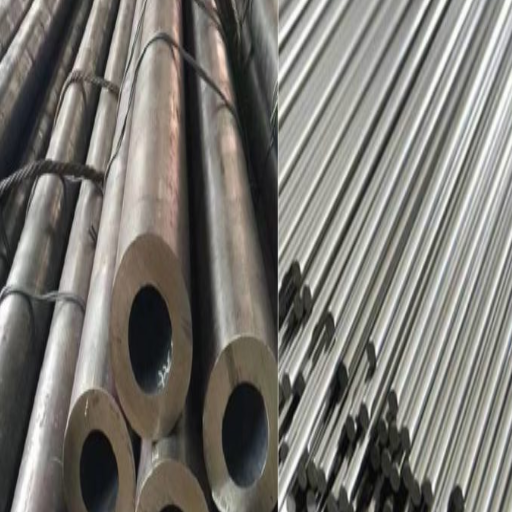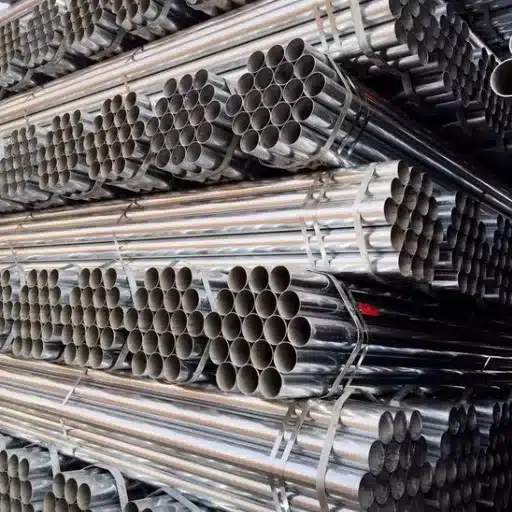Nickel alloys play a critical role in a wide range of industries, offering exceptional strength, corrosion resistance, and durability under extreme conditions. Among these, Monel and Inconel stand out as two of the most prominent and widely used options. While both materials share a foundation in nickel, their compositions, properties, and applications vary significantly, making them optimal for distinct needs. This article will provide an in-depth comparison of Monel and Inconel, helping you understand their differences, unique characteristics, and the industries where they excel. Whether you’re a materials engineer selecting the perfect alloy or a professional seeking to optimize performance in demanding environments, this guide will equip you with the crucial insights you need.
What is Monel and how is it used?
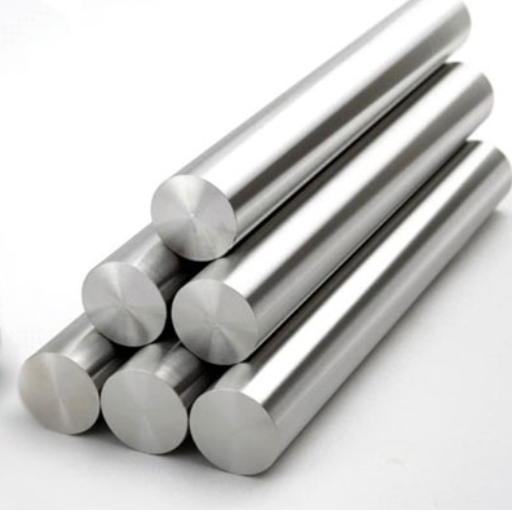
Monel: A Nickel-Copper Alloy
Monel is a type of nickel-copper alloy, specifically 65% nickel and 30% copper with small quantities of iron, manganese, carbon, and silicone. These alloys are best known for their excellent strength, durability at wide ranges temperatures, and startling resistance from rust and corrosion in the marine and chemical industries. For instance, marine components including propeller shafts, pumps, valves, and even ship hulls require materials that withstand saltwater and acids, Monel features the greatest robustness against rust and corrosion.
Besides its mechanical properties, Monel is also fairly easy to modify into different shapes and sizes. It can be welded, machined, and shaped with great ease. Other industrial uses such as chemical processing equipment, crude oil distillation columns, and heat exchangers require custom applications which can easily be met with Monel.
Because of its distinctive qualities, Monel is used in diverse fields like marine engineering, aerospace, and chemical processing. For instance, in aerospace, Monel is used in manufacturing fuel and exhaust systems due to its ability to endure harsh environments. Even though it is more expensive than other alloys, the strength it offers in severe conditions frequently makes its use acceptable in situations where dependability and longevity are essential.
Applications and Industries for Monel 400
Monel 400 is an alloy that combines strength and versatility where extraordinary protection from corrosion is needed. Marine engineering, chemical processing, oil and gas, and even aerospace industries utilize the alloy. Chemical and marine industries make the best use of Monel 400 as it withstands seawater, hydrofluoric acid, and an alkaline environment, which is useful in their corrosive surroundings.
Such industries utilize Monel 400 for shafting, propeller blades, and pump components in marine engineering. The latter is mostly used due to its strength against saltwater pitting and stress corrosion. The chemical processing industry utilizes Monel 400 as well for its storage tanks, piping systems, and heat exchangers which involve acidic or hard to manage compounds. Additionally, the oil and gas industry relies on Monel 400 for equipment used in offshore drilling due to exposure to extreme temperatures and corrosive elements.
Monel 400 is particularly beneficial to the aerospace industry for parts that withstand elevation in temperature and air pressure, such as the fuel and exhaust systems, as well as the instrumentation components. Its uses in altitudes where safety, reliability, and performance factors play a role highlight its suitability for harsh operating environments. Although it’s more expensive than most other options, Monel 400 is still extensively used in highly corrosive environments because of the overwhelming need for reliability.
Understanding Corrosion Resistance in Monel
Monel alloys, especially Monel 400, showcase remarkable corrosion resistance because of their nickel-copper mixture, which provides stabilization in many harsh environments. This resistance works best in acidic and alkaline conditions as well as seawater and brine, where standard metals would otherwise fail. The alloy generates passive oxide films that protect it from corrosive agents on its surface, making it an optimal choice for chemical plants, marine settings, and oil extraction operations.
Monel 400 withstands pitting and crevice corrosion, which are predominant in chloride-rich environments. Unlike other stainless steels, Monel’s nickel content guarantees that chloride ions do not destabilize its protective barrier. That capability enables its reliable performance in saltwater and other chloride-rich environments without losing structural integrity. Moreover, Monel exhibits considerable resistance to stress corrosion cracking, a prevalent failure mode of metals subjected to tensile stress and a corrosive environment simultaneously.
Furthermore, Monel has corrosion resistance at both cryogenic and high temperatures. This allows it to be used in industries that deal with extreme or changing temperatures. Even though the material’s cost may be perceived as a downside due to its premium price, it is justified in the long run because of its strength, longevity, and less frequent replacements needed in corrosive environments.
The Composition and Benefits of Inconel
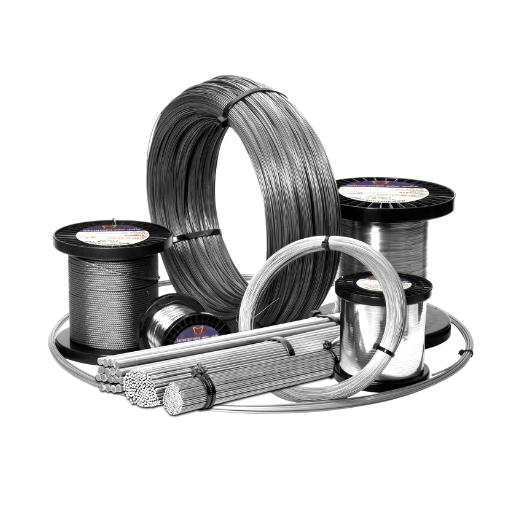
What Makes Inconel a Superalloy?
Inconel is categorized as a superalloy because of its remarkable ability to sustain mechanical and chemical properties at different environmental extremes. Inconel alloys are composed of nickel which is 50-70%, and the alloy contains different amounts of chromium, iron, molybdenum, cobalt, and other elements depending on the specific grade. Due to advance degree of yielding the alloy is kept at high temperatures, the superalloy has remarkable resistance to ignition oxidation, carburization, corrosion, and other corrosive forms.
Inconel is greatly acknowledged for its nickel and chrome content. It provides distinct characteristics such as withstanding further heating, permitting Inconel to remain stable at the increase in temperature, and protecting against overheating exhausts. Additional traits for the material include usage in aerospace, power, chemical, and gas industries as which require resistance to high thermal and mechanical strain. Additionally, some grades also contain Molybdenum, Niobium, and increase impact yield resistance and shear strength to deformation, hence further increases resistance to bending and high tensile forces.
Also, the alloy’s ability to withstand stress caused by chloride ions and resistance towards pitting makes it very dependable for use in saline or humid conditions. This property is very important for marine applications and oil and gas extraction operations. Its adaptability and proficiency under various operational stresses distinguish it as a superalloy, offering unsurpassed strength and efficiency in corrosive and high-temperature situations.
The Role of Nickel and Chromium in Inconel
The elements Nickel and Chromium are crucial in Inconel’s construction, as they aid in improving its performance. These two elements help the alloy withstand oxidation, corrosion, and high temperatures, making it useful in many industrial applications.
- Oxidation Resistance: An alloy with 50-72% nickel content binds with oxygen to form a stable oxide layer over the surface of the alloy, further preventing oxidation during prolonged use.
- Corrosion Resistance: An alloy with 14-23% chromium in it can show resistance to corrosion by forming a passive oxide layer that will protect it from saline environments that contain chloride ions.
- Thermal Stability: As a stable metal, nickel exhibits outstanding thermal stability for an alloy if it exceeds 1,000°F (540°C), as it will maintain operational integrity in high-temperature environments.
- Mechanical Strength: The alloys made from chromium and nickel possess exceptional resistance towards stress fractures because of the high mechanical and thermal stress they can withstand.
- Resistance to Pitting and Crevice Corrosion: The presence of significant amounts of chromium reduces localized corrosion such as pitting or crevice attacks, which are worsened by acidic or aggressive chemical surroundings.
These properties, when taken together with the accurate adjustment of other important factors like molybdenum and iron, which accompany nickel and chromium, guarantee that distinct types of Inconel fulfill the demanding needs of aerospace, marine, energy, and even chemical process industries.
Applications of Inconel 625 in High-Temperature Environments
Due to its escalating demand in power and aerospace industries, Inconel 625 has gained exceptional recognition. This can be traced to the ever increasing need of equipment and machinery that can withstand extreme temperature environments. The alloys mentioned above have a fixation to being exposed under brutal conditions while still retaining their physical assets.
In regards to turbines, Inconel 625 demonstrates overpowering reliability, state-of-the-art results are witnessed when utilized in turbines, jet engines, propulsion engines, and gas turbine engines. furnaces and other demanding machinery. Exceeding expectations while being under thermal stress cyclically and retaining its performance under prolonged thermal stress helps in maintaining in moving the material above any expectations that can be held towards it.
The other quality that further strengthens Inconel 625 alloys is its niobium composition. The amount of niobium present, besides altering the thermal stress hardness of the alloy, improves its cyclic standing while in motion. Components such as these exhibit great power when exposed to great pressure and temperature alongside harsh chemistry, enabling them to be used in reactors wherein replacing core equipment used in these extreme conditions is as simple as changing a part. The readily customizable fortitude that resonateswith the name Inconel 625 helps find an easy adaptable replacement from furnaces to distinctly harsh operational frameworks.
Comparing Monel and Inconel: Key Differences
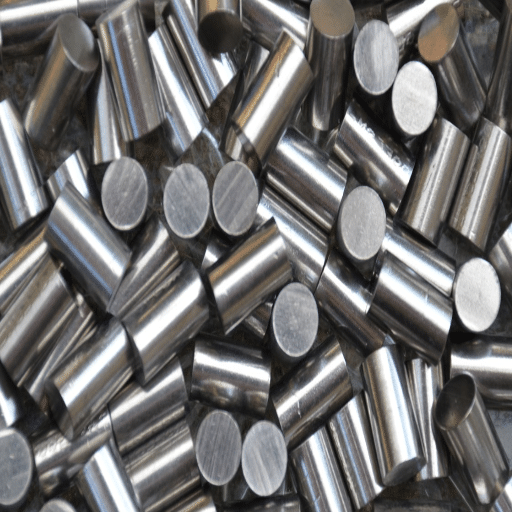
Difference Between Inconel and Monel in Terms of Corrosion Resistance
Due to its copper content, Monel is better than Inconel in resisting corrosion in seawater and acidic environments. Inconel has better oxidation resistance at high temperatures than Monel.
Comparison Table for Inconel and Monel Resistance to Corrosion:
|
Aspect |
Inconel |
Monel |
|---|---|---|
|
Oxidation |
High resistance |
Moderate |
|
Seawater |
Limited use |
Excellent |
|
Acids |
Strong resistance |
Excellent (specific acids) |
|
Alkalies |
Moderate |
Excellent |
|
Temperature |
High tolerance |
Limited |
Analyzing High-Temperature Performance: Inconel vs Monel
Inconel outperforms Monel in high-temperature environments due to its oxidation resistance and ability to maintain strength at high temperatures.
Comparison Table: Inconel vs Monel temperature performance:
|
Aspect |
Inconel |
Monel |
|---|---|---|
|
Max Temp |
Up to 2000°F |
Up to 1000°F |
|
Oxidation |
Excellent |
Moderate |
|
Strength |
High |
Moderate |
|
Applications |
Aerospace, turbines |
Marine, chemical |
|
Durability |
High heat |
Limited at heat |
Mechanical Strength: Which Alloy Performs Better?
Inconel and Monel alloys have significant applications in various fields of machinery and construction, but there is a marked difference in their mechanical strength and composition that needs particular attention, while Inconel has almost double the precision of Monel, affecting the overall performance across various fields, from basic construction to aerospace and aviation. Inconel is specifically designed as a nickel-chromium alloy that is characteristically extremely strong with a superstructure even at high temperatures above 1300°F, alongside very high temperatures, industrial heating, and even nuclear applications.
In turn, Monel is comparatively more tender. It starts to loose efficacy over Inconel at roughly 1000F, but does perform better at lower temperatures than Inconel, specially coping superbly with corrosive environments like seawater. Steel and copper based alloys however become stoic at even lower temperatures.
Given that the value of tensile strength greatly impacts practic, Inconel alloys do outperform Monel alloys on average throughout – monel sitting at a rough 70-85 ksi while Inconel alloy averages at 100-150 ksi. The yield strength of Monel earlier mentioned sitting greatly below that of Inconel does considerably worsen the alloys overall performance under extended deformation and stress.
At the end of the day, the decision between these two alloys for applications related to mechanical strength is influenced heavily by the state of the surrounding environment. In high temperature and high stress conditions, Inconel tends to perform better due to its increased toleration of heat and its superior mechanical properties. However. Monel does better in marine or chemical applications of moderate temperature because of its excellent mechanical strength and its well-known resistance to corrosion.
Understanding the High-Temperature Capabilities of These Nickel Alloys
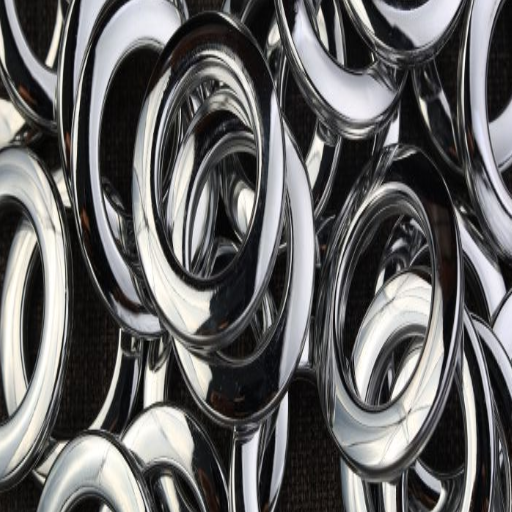
How Inconel 718 Withstands High Temperature Conditions
In my opinion, the developed metallurgy Inconel 718 alloy has might features, and its high temperature performance is due to its alloying elements. The Inconel718 is a nickel-chromium base alloy with the addition of molybdenum, niobium, and small concentrations of other nutrients. This remarkable thermal stability and mechanical strength are provided by the elements through the work of chamber stabilizing processes, fueled by heat. In addition, through precipitation hardening processes that depend on the formation of gamma double prime (γ”) and gamma prime (γ’) phases, discontinuous strengthening significantly improves the microstructure of the alloy to enable it to resist deformation under high temperature strain.
Furthermore, this alloy is also shown to have the best characteristics in terms of oxidation protection and corrosion resistance, even in highly oxidizing and aggressive chemical industrial environments. The Nickel and the chromium in the alloy work as a guard on the alloy’s surface to prevent it from oxidizing and suffering destruction. This enables the alloy to effectively stabilize even during the extremely high destruction, exposing active conditions. Hence, enable the alloy to be used widely in jet engines, gas turbines, high-endurance machinery, as well as aerospace technologies that need thermally resistant and strong materials.
Lastly, let’s recognize that its mechanical and thermal properties are further backed by exceptional creep resistance and fatigue life. This attribute suggests that Inconel 718 is capable of retaining structural fidelity under static loads at elevated temperatures and enduring cyclic stresses without degradation. These features contribute to why it is among the most popular alloys in industries with extreme temperature environments, testament to its engineering worth and unparalleled technological merit.
The Impact of Elevated Temperature on Monel
Monel stands out from the crowd, exhibiting impressive results at high temperatures. In comparison to copper alloys, Monel as a class of alloys showcases corrosion resistance, mechanical strength, and performance at increased temperatures.
- Thermal Expansion: As temperature increases, Monel’s expanstion stays moderate compared to other alloys. In terms of the coefficient of thermal expansion, Monel stands at 13.9 µm/m°C which assists in position the alloy in various applications.
- Retained mechanical strength: The copper-nickel alloy exhibits excellent tensile strength dominantly with the Monel 400 grade enduring extreme conditions of ~538°C. It is worth highlighting that mechanical strength is still maintained beyond moderately high temperatures.
- Oxidation resistance: High levels of oxidation are resisted thanks to Monel alloys’ high resistance. Its application durability is exposed to around 649°C ensuring the viability of Monel.
- Thermal Conductivity: Besides the mentioned properties, Monel boasts high corrosion resistance with 21.8 W/m·K ascribed to Monel 400. With these stats, Monel alloys can resist harsh operating conditions in components like heat sinks, exchangers, and other machinery.
- Creep Resistance: Compared to Inconel alloys, Monel exhibits limited creep resistance. At elevated temperatures with sustained stress, some degree of creep deformation is likely to occur over time, which underscores the need for purposeful design strategies.
From these characteristics, it stands clear that Monel is best suited for moderately high temperatures where its strength, oxidation and thermal conductivity resistance allows it to be useful for industrial purposes and marine activities. However, for industrial purposes that need constant exposure to very high external temperature, other alloys like Inconel, known for their better creep resistance, may be sought.
Choosing Between Monel and Inconel for Your Projects
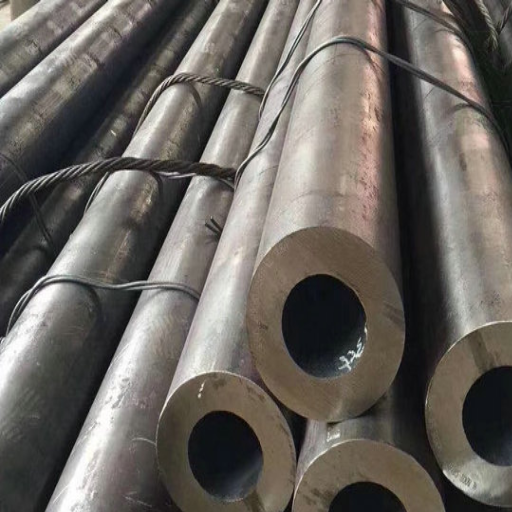
Considerations for Selecting the Right Nickel Alloy
There are numerous factors to consider while evaluating which alloy is best suited to an application, Monel or Inconel. The first factor is the operating temperature limits. According to some researchers, Monel is believed to perform very well under marine or chemical conditions with moderate to high temperatures, along with possessing high corrosion resistance. It is worth noting, however, that gas turbines and jet engine applications that expect long-term exposure to over 1,000°F (538°C) Inconel alloys would outperform others for their thermal stability, creep resistance, and, of course, being nickel-chromium based.
Equally important is the set of environmental conditions the material is required to withstand. Due to its excellent resistance to seawater corrosive action and hydrofluoric acid, Monel is used widely in Marine Engineering. Monel is also used for manufacturing pumps and valves. With highly oxidizing agents or harsh oxidizing acids such as nitric acid (at high temperatures), Inconel would outperform Monel due to high chromium content, enabling the formation of an oxidized layer on the surface.
Evaluate the mechanical properties with the same level of care and precision. Monel alloys’ markings on raw materials have relatively high resistance to machining and sawing. Monel provides a distinctive blend of toughness, ductility, and strength, which often caters well to machining and forming operations. However, interactions involving subcritical to high-stress environments or in scenarios where superior elevation in tensile strength is required include advanced alloys of inconel, especially those with higher nickel and molybdenum concentration, as they provide superior structural reliability.
Lastly, value as well as method factors must be considered. Monel is prepared for Machining with a saw, while Inconel and even offer lower costs for economic efficiency while serving in smaller projects. The case is different for Inconel, which is more expensive; however, as it is needed in the Wiring of Space and Air Vehicles, Automotive, and Energy Industries,w here extreme durability and performance justify the material’s price.
Evaluating Cost-Effectiveness and Performance
While considering materials for their industrial uses, balancing costs and efficiency is rarely easy. Costs already include overheads, life-cycle wear-and-tear, maintenance, and even the working environment. For instance, Monel exhibits superb corrosion resistance, especially in marine applications, but its mechanical strength may not support high-stress applications with significant reinforcement.
Inconel is often regarded as an expensive alloy, but its tensile strength at elevated temperatures gives Inconel an edge over other alloys; this justifies the expense when applied in aerospace turbine parts or energy sector components. Recent studies support this by showing projects with operational temperatures exceeding 1,200°F (649°C) seem to prefer Inconel, even considering its corrosive environment, supporting it with distinctly marked inoxidal structures.
Simulating material performance under specific conditions with advanced modeling and predictive tools allows engineers greater control over design accuracy. This leads to more precise analyses of the expense versus benefit without empirical testing. By applying these findings, along with expert opinion, organizations achieve an optimum economic and technical solution towards reliability and longevity for demanding applications.
Which Alloy Offers Better Toughness in Corrosive Environments?
Two factors, the constituent alloy’s material strength requirements and its inherent corrosion resistance, are critical to evaluate when determining the performance of an alloy in corrosive environments. The austenitic stainless steel alloys, especially 316 and 316L, are known to have superior alloysmanship owing to their high chromium and molybdenum content, which enables them to resist corrosion in the presence of chlorides or acidic substances. However, 2205 duplex stainless steels are known to be stronger and more resistant to corrosion, which not only acts against many grades of austenitic steels, but also surpasses them in performance in certain environments where pitting and crevice attack are present.
Moreover, Nickel alloys Inconel 625 and 718 are great choices for extreme conditions like the presence of highly oxidizing or reducing high temperatures, as they contain high amounts of nickel and molybdenum. Along with these alloys having great metal strength at low and high temperatures, they also retain their mechanical strength excellently at both levels. Comparatively, studies suggest that stainless steels and nickel alloys both have weaknesses and strengths; however, in aggressive environments, nickel alloys take the lead, whether it be in longevity or sustaining structural integrity, although they come at a steep price.
In the end, a decision to go with either stainless steels or nickel-based alloys will depend on the exact corrosive factors, operational temperatures, and cost factors. To determine the best alloy for optimal performance, reliable performance engineering requires a deep evaluation using a systems approach considering all material factors.
References
-
Stress Corrosion Cracking in Monel 400
Open Research at Oklahoma State University -
Best Available Copy on Monel and Inconel
CiteSeerX Repository -
Study of Fatigue Crack Initiation and Short Crack Growth in a Monel Alloy
Open Research at Oklahoma State University
Frequently Asked Questions (FAQ)
Q: What is the primary difference between Monel and Inconel alloys?
A: The primary difference between Monel and Inconel alloys is their composition. Monel is a nickel-copper alloy known for its high strength and excellent corrosion resistance, especially in seawater and acidic environments. Inconel, on the other hand, is a nickel-chromium alloy that offers high temperature resistance and strength, making it suitable for extreme heat applications.
Q: How does the chemical composition of Monel alloys contribute to their properties?
A: Monel alloys, such as Monel 400 and Monel K-500, contain nickel and copper, which provide high resistance to corrosion and oxidation. The presence of nickel gives these alloys excellent resistance to seawater and sulfuric acid, while the copper content enhances their overall strength and durability.
Q: What are some common applications of Inconel 600?
A: Inconel 600 is commonly used in applications that require high temperature resistance and strength. It is often found in the aerospace industry, gas turbine components, and chemical processing equipment, where extreme heat and corrosive environments are prevalent.
Q: Why is Inconel considered more expensive than Monel?
A: Inconel is typically more expensive than Monel due to its complex manufacturing process and the inclusion of additional alloying elements such as chromium and molybdenum, which enhance its high-temperature strength and corrosion resistance. These properties make Inconel suitable for demanding applications, justifying its higher cost.
Q: What role does Hastelloy play in comparison to Monel and Inconel?
A: Hastelloy is another nickel-based superalloy known for its excellent corrosion resistance and high temperature strength, similar to Inconel. It is used in highly corrosive environments and can withstand sulfuric and hydrochloric acid. While Monel is primarily used for its seawater resistance, Hastelloy is chosen for its performance in more aggressive chemical settings.
Q: How does the nickel and copper content in Monel affect its use in marine environments?
A: The nickel and copper content in Monel provides outstanding resistance to sea water corrosion, making it an ideal choice for marine applications such as propeller shafts, pump impellers, and seawater valves. This alloy can withstand the harsh conditions found in marine environments better than many other materials.
Q: What makes Inconel suitable for high-temperature applications?
A: Inconel alloys are suitable for high temperature applications due to their exceptional strength and oxidation resistance at elevated temperatures. The nickel-chromium composition of Inconel allows it to maintain its structural integrity and resist scaling even when exposed to extreme heat, making it ideal for use in jet engines, gas turbines, and other high-temperature environments.
Q: How do Monel bolts compare to Inconel bolts in terms of performance?
A: Monel bolts are well-suited for applications involving sea water and other corrosive environments due to their excellent corrosion resistance. Inconel bolts, however, are better suited for high temperature and high strength applications. While both types of bolts offer unique advantages, the choice between them depends on the specific requirements of the application.

